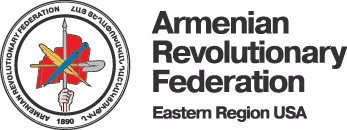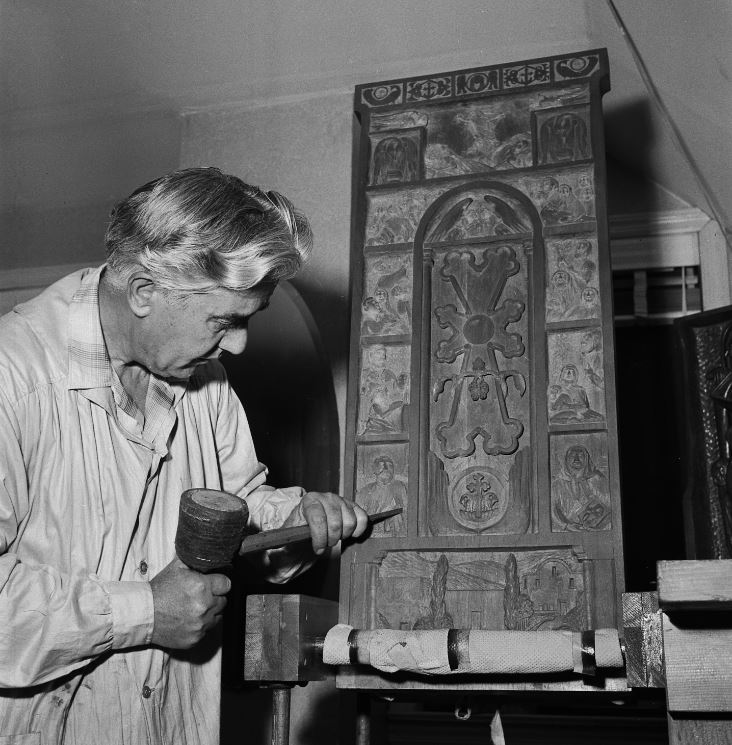Lost Hagopian Art to Be Exhibited at AMA

On Sat., March 12, the Armenian Museum of America (AMA) will host the opening of a touring exhibition displaying the works of Yenovk Der Hagopian entitled, “Untold Story of an Armenian-American Artist.” The opening will include a reception held in the Adele & Haig Der Manuelian Galleries on the third floor of the Museum. The event is free and open to the public, and light refreshments will be served at the reception.
The “Untold Story” exhibition will display more than 20 works, including paintings on canvas, metal engravings, woodcarvings, and an album. The global tour of the exhibition was launched in Brooklyn, N.Y., by the Bishop Gallery and the estate of the late artist. In addition to its second stop at AMA, the tour will also travel to Los Angeles, Washington, D.C., Miami, and Toronto, with a conclusion in Paris. The exhibition will be on display at AMA until May 24, Der Hagopian’s 116th birthday. The March 12 event starts at 2 p.m.
Der Hagopian’s work, which serves as a history lesson on Armenian culture, will be displayed for all to see 50 years after his death thanks to Bishop Gallery owners Erwin John and Stevenson Dunn. “No longer will his pieces be condemned to a storage closet,” they said. “His work speaks to the history and legacy of a people. A history deeply rooted in pain—a pain that served as a catalyst for his creativity. After learning about this artwork through artist and historian Carlos Pinto, we thought it was imperative for the work to be shown, particularly because the arts play a significant role in preserving cultures that were completely or nearly extinct due to genocide.”
AMA is no stranger to Der Hagopian’s work. Before his death in 1966, he constructed seven large wooden replicas of ancient Armenian churches, each several feet high. These were to be a part of a larger installation on a four-acre parcel of land he bought in Connecticut. However, Der Hagopian suffered a heart attack a week before they were to be moved and the seventh church, a model of the Cathedral of the Holy Cross, was never finished. The churches have been displayed in an exhibition at the AMA and are currently part of the museum collections.
Born on May 24, 1900, in Ishkhanikom, Western Armenia, Yenovk Der Hagopian was the son of an ordained priest and lifelong confidante to the famed “Father of Abstract Expressionism,” Arshile Gorky. The Armenian Benevolent Union stated, “There is an honesty and deep emotional feeling in these early carvings of mourners, immigrants, and survivors of the massacre of the Armenians.” Der Hagopian was said to have created his pieces of Armenia in their exactness from memory, and even recreated an Armenian landscape, complete with lakes and mountains, in his own backyard.
Proud to be an American, he immigrated to Massachusetts in 1923 to live in Watertown, where he reunited with Gorky and continued his art studies. It was also in America that he recorded Armenian folk songs and started a family. He married Nevart Kalarchian on Aug. 28, 1948. His artwork was discovered by his wife’s granddaughter, after her family decided to renovate their home. She was intrigued by the musings held in storage for decades, and decided to explore the life of this artist.
On learning more about his work, she explains, “I was connecting with a country I knew little about, while educating myself and my family on the greatest American art movement of the 20th century.”
The discovery of Yenovk Der Hagopian’s work has inspired the Kalarchian family to start a fund in his name. Aimed at preserving the works found in their grandmother’s home, the family also hopes they can raise enough funds to continue to have his art teach of Armenia’s rich culture around the world. To donate, supporters can visit http://www.yenovkderhagopian.com/donations.
Source: Armenian Weekly New England

